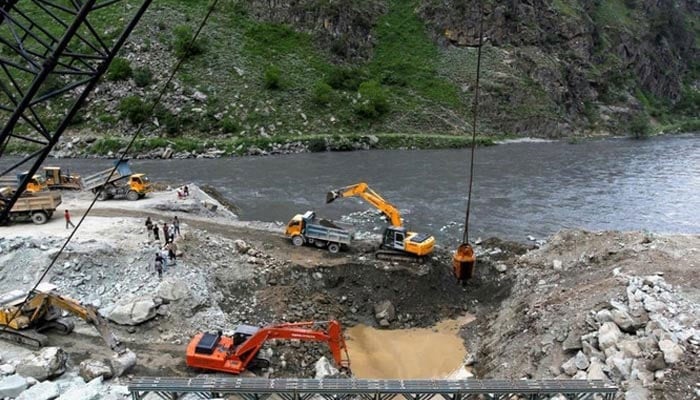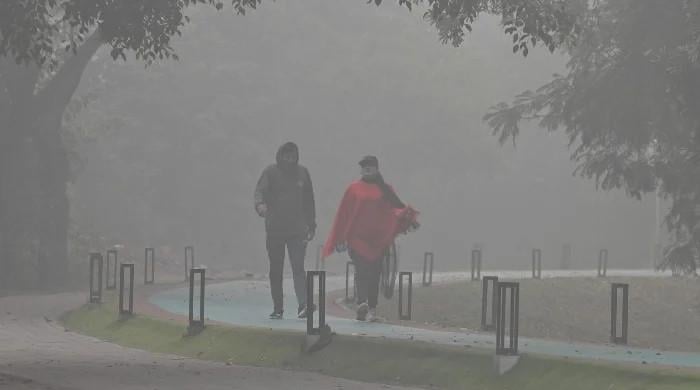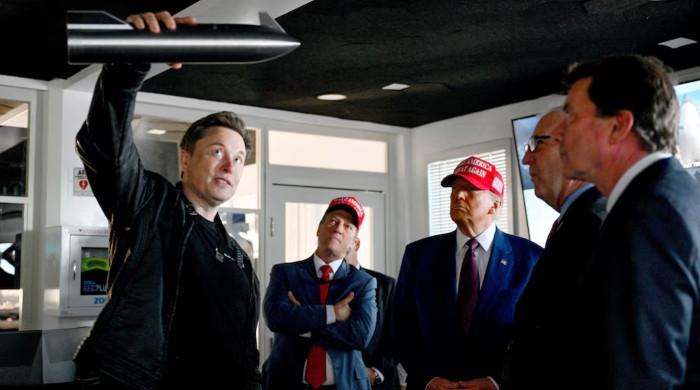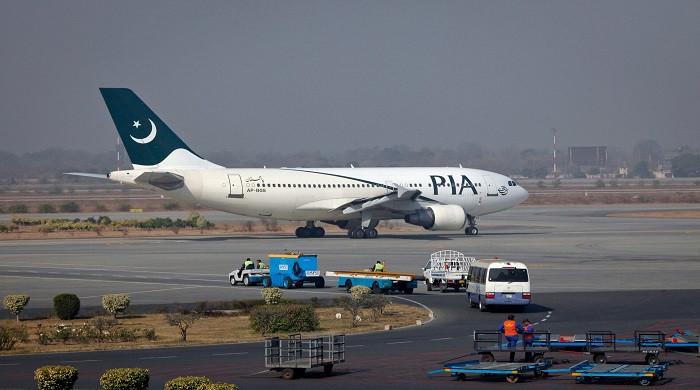India building another controversial hydropower project on River Chenab
India is pretending projecr will have live storage of 88,000 acre-feet with faulty design of spillways in sheer violation of IWT 1960
December 04, 2023

- Project has live dam storage of 99,000 acre-feet.
- Pakistan already invoked Article 9 of Treaty.
- India also started construction of Kiru, Kwar projects.
ISLAMABAD: India has started constructing the first-ever hydropower project on Maru Sadar, the right bank tributary of the River Chenab that violates the provisions of the Indus Waters Treaty (IWT) 1960, The News reported Monday.
Islamabad and New Delhi are already in a legal battle in the court of arbitration and neutral expert, the two international forums on the faulty designs of 330MW Kishanganga and 850MW Ratle hydropower projects being built on Pakistan’s rivers.
Pakistan has objected to the designs of the hydropower project which has live dam storage of 99,000 acre-feet and a capacity to generate 1,000MW hydropower generation.
India is pretending that it will have live storage of 88,000 acre-feet with a faulty design of spillways in sheer violation of the IWT 1960, according to experts. The project will be completed within two years.
But Pakistan has already invoked Article 9 of the Treaty, under Paragraph 11 of Annexure-E, on the project’s spillways and free board designs way back one-and-a-half years ago.
“We are observing the said project and already raised objections on its design under Article 9. We would again raise the issue under Article 9 of the treaty with the Indian side at PCIW level talks, which may be held before March 2024,” a senior official of Pakistan Commissioner for Indus Waters (PCIW) confirmed to The News.
India, under the treaty, has the right to store 3.6 million acres of water on Pakistan rivers for irrigation purposes, and to this effect, it is going to complete the Pakal Dal project with a reservoir of 99,000 acre-feet of water.
Pakistan is of the view that India will have a live storage capacity of 99,000 acre-feet in the Pakal Dal dam and that the quantum of water should be deducted from 3.6 million acre-feet of its water storage right.
But India, with a faulty design of spillways, wants to pretend since it has a live storage capacity of 88,000 acre-feet, so the volume of 88,000 acre-feet should be deducted from its right of water storage on Pakistan rivers.
If talks under Article 9 fail, the Pakistan side will start exhausting other endeavours mentioned in the Indus Waters Treaty, and after that in case no resolution is attained, Pakistan will be left with no option but to move a court of arbitration on the particular project.
Meanwhile, India has expedited its construction work for two more projects — the Kiru and Kwar projects upstream Ratle project on the Chenab River with designs that are in sheer breach of provisions of the Indus Waters Treaty of 1960.
Pakistan has objected to the designs of the Kiru hydropower project of 624MW and the Kwar hydroelectric power project of 540MW in its recent interaction with India at the level of the PIWC. India is bound to share the designs of its projects with Pakistan under the agreement.
The Kiru hydropower project is being built along the River Chenab near the villages of Patharnakki and Kiru, approximately 42 kilometres from Kishtwar. It will be located between the Kirthai-II hydroelectric project to its upstream and the Kwar hydroelectric project to its downstream.
As per India, Kwar is a run-of-river project. The net head of the project will be 56.6 metres. The total number of penstocks, pipes or long channels that carry water down from the hydroelectric reservoir to the turbines inside the actual power station, is expected to be four in number. The penstock length will be 236 metres. The penstock diameter will be 5.65 metres. The project is expected to generate 1,975.54GWh of electricity. The hydropower project consists of four turbines, each with 135MW nameplate capacity.
“India has shared with us some days back the designs of two more projects that it is planning to construct on the River Chenab upstream Ratle hydropower project,” a senior official of PCIW told The News.
“We have submitted our objections on the designs of both the projects on components which include spillways, freeboard, and pondages. India is repeating the violations of design-related provisions of the Indus Waters Treaty of 1960 in the designs of its projects despite Pakistan’s repeated objections. Similar faulty designs that have been adopted in the Kishenganga and Ratle projects are being repeated by India in more hydropower projects on Pakistan’s rivers,” the official added.
Transboundary water expert Engineer Arshad H Abbasi said that a report recently by the Ministry of Power India demonstrates the speed at which India is developing dams on the River Chenab. The progress report reveals the rate at which India is finishing the bumper-to-bumper projects along the Transboundary River.
Abbasi, while referring to the report, said India had finished the road construction work while the MAT (miscellaneous area tunnel) excavation was underway. Some 90% of Power House Cavern’s excavation was finished, 15% of the dam abutment excavation was accomplished, and 84% of the Power House Access Tunnels excavation was finished. However, Indian environmentalists and the local populace forced India to halt this project indefinitely.
The progress report states that 624MW Kiru HEP is anticipated to be finished in early 2024, after 16 months. The Kiru power project will only cost INR4.27 per unit, in contrast to the high tariff of Pakistani hydropower projects.
On another project, 540MW Kwar Hydropower Project on the same river, work is in full swing. This project will be completed in 2026 after three years. On completion, this project will offer electricity only at the rate of INR4.07 per unit.











